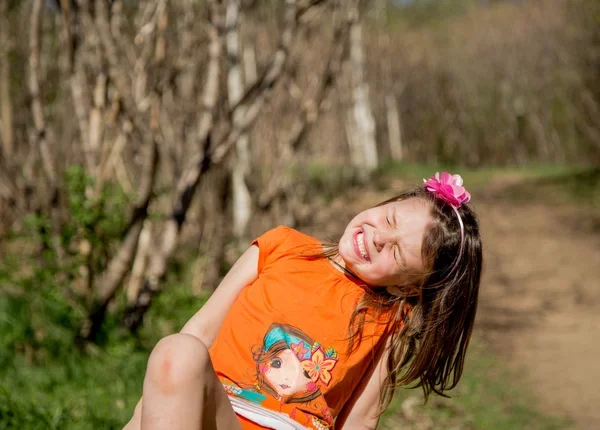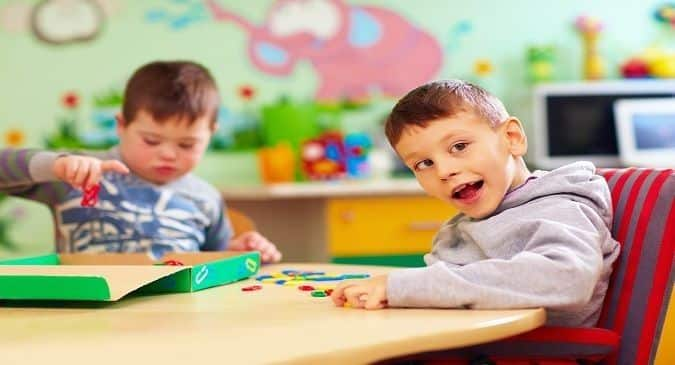Squinting is a common phenomenon among children, often dismissed as a simple reaction to bright light or playful curiosity. However, it serves as a crucial indicator of a child’s visual health. When kids squint, they’re often trying to see better, which can be a sign of various underlying vision issues. This article aims to illuminate the possible causes of squinting in children, emphasizing the importance of early detection and intervention to safeguard their eyesight.

What is Squinting?
Squinting refers to the partial closing of the eyelids to reduce light exposure and improve focus on an object. It’s a natural response when children are trying to see something more clearly, especially in changing lighting conditions or at distances where their vision may not be optimal. While occasional squinting can be perfectly normal, parents need to understand its implications concerning their child’s vision health. Frequent or prolonged squinting can indicate uncorrected vision problems that warrant further investigation. This behavior not only affects their ability to see clearly but can also impact their overall learning and development.
Common Causes of Squinting in Children
1. Refractive Errors
Refractive errors, such as myopia (nearsightedness), hyperopia (farsightedness), and astigmatism, are some of the most common causes of squinting in children. According to the American Academy of Ophthalmology, nearly 30% of children experience some form of refractive error. If left undetected, these can lead to amblyopia, often referred to as lazy eye. Regular eye screenings are essential to identify and address these issues before they affect a child’s learning and development.
2. Bright Light Sensitivity
Children may squint in bright sunlight or under intense indoor lighting to minimize discomfort caused by glare. This squinting is an instinctive protective response to reduce the amount of light entering the eyes. Overexposure to bright light can lead to visual discomfort and even headaches. This highlights the importance of proper eye protection for kids, such as UV-blocking sunglasses.
3. Eye Strain
Factors contributing to eye strain include extended periods of reading, watching screens, or focusing on specific tasks for too long. The Vision Council reports that 80% of children use digital devices for more than two hours daily, resulting in symptoms such as squinting, headaches, and dry eyes. Implementing the 20-20-20 rule—looking at something 20 feet away for 20 seconds every 20 minutes—can help alleviate eye strain and promote better visual health.
4. Dry Eyes
Dry eyes can occur due to various reasons, including environmental factors like dry air or prolonged screen time. A study by the National Institutes of Health (NIH) found that children reporting symptoms of dry eyes were more likely to squint frequently. Symptoms of dry eyes include a sandy or gritty sensation, irritation, and redness. Regular hydration and minimizing screen time can help reduce dryness and improve comfort.
5. Foreign Objects
Children are naturally curious and may get foreign objects (like sand, dust, or pollen) in their eyes while playing. If a foreign object is present, children may squint to see or because of discomfort. It is important for parents to check for visible irritants and seek medical help if a foreign object cannot be removed easily.
6. Eye Infections
Conditions such as conjunctivitis (pink eye) or styes can cause significant discomfort and lead children to squint in an attempt to relieve that discomfort. Symptoms often include redness, swollen eyelids, and discharge. Parents should consult with a healthcare professional to obtain appropriate treatment and prevent complications.
7. Sensitivity to Light (Photophobia)
Some children may experience heightened sensitivity to light, leading them to squint in response. This can be a symptom of various conditions, including migraines or eye injuries. Addressing the underlying cause of light sensitivity is crucial for overall eye health and comfort.
Symptoms Accompanying Squinting
In addition to squinting, parents should be aware of other symptoms that may indicate a vision problem:
- Frequent eye rubbing or blinking
- Difficulty focusing on objects, especially during reading or close work
- Head tilting or turning to one side while looking at objects
- Complaints of headaches or eye strain
- Double vision or confusion when viewing objects
If your child exhibits any of these symptoms alongside squinting, it is essential to consult an eye care professional.
The Importance of Early Detection
Early detection and intervention are critical in addressing the causes of squinting. The visual pathways in a child’s brain develop rapidly during the first seven years of life. If a squinting condition is not treated during this critical period, it can lead to permanent vision impairment, such as amblyopia. According to research, approximately 1 in 20 children are affected by strabismus, highlighting the need for regular eye examinations as part of routine pediatric care.
When to Seek Medical Attention
Recognizing when squinting may warrant concern is crucial for ensuring a child’s eye health. Parents should consider the following signs that indicate a need for professional evaluation:
- Frequency of Squinting: If your child squints frequently throughout the day or during specific activities, it may indicate an underlying vision issue.
- Duration of Squinting: Prolonged squinting that lasts more than a few weeks should be discussed with a pediatric ophthalmologist.
- Accompanying Symptoms: Additional symptoms such as eye pain, severe redness, discharge from the eyes, or headaches are signals that require prompt medical attention.
- Impact on Daily Life: If squinting interferes with your child’s ability to perform everyday tasks, such as reading at school or enjoying outdoor activities, it’s time to consult a specialist.
Early intervention can significantly improve a child’s quality of life and prevent further complications. Regular eye check-ups, especially if there is a family history of vision problems, are essential for catching issues early and ensuring proper development of your child’s eyesight.
Conclusion
Understanding the reasons behind your child’s squinting is essential to address potential vision problems effectively. Squinting can be a normal behavior, but when it becomes excessive or is accompanied by other symptoms, it can indicate a need for further evaluation. Parents should monitor their children’s eye habits and encourage regular eye screenings, which can greatly aid in the early detection of any issues. By being proactive about eye health, parents can help ensure their child’s vision develops appropriately, laying a strong foundation for their future learning and experiences. If you notice signs of squinting in your child, don’t hesitate to consult with an eye care professional to secure their visual health and improve their quality of life.
Also Read | Does crying affect your eyesight? Disadvantages of crying too much










